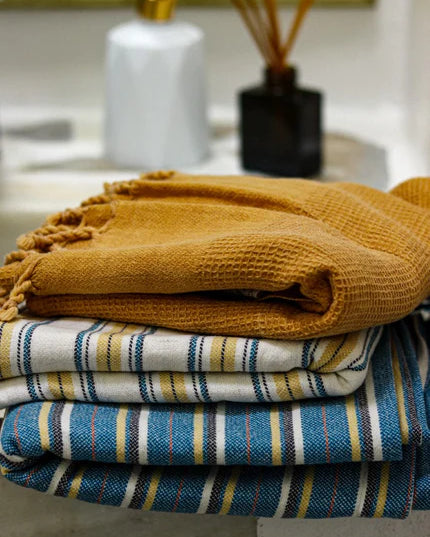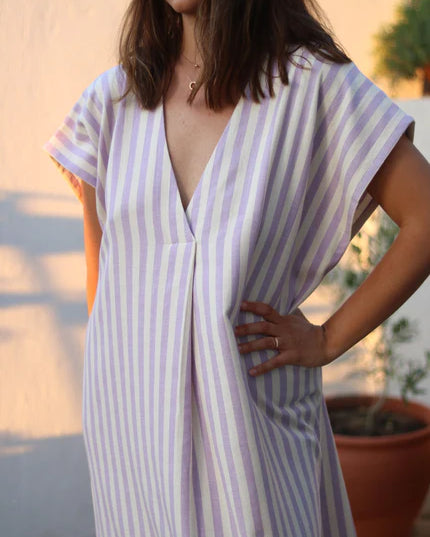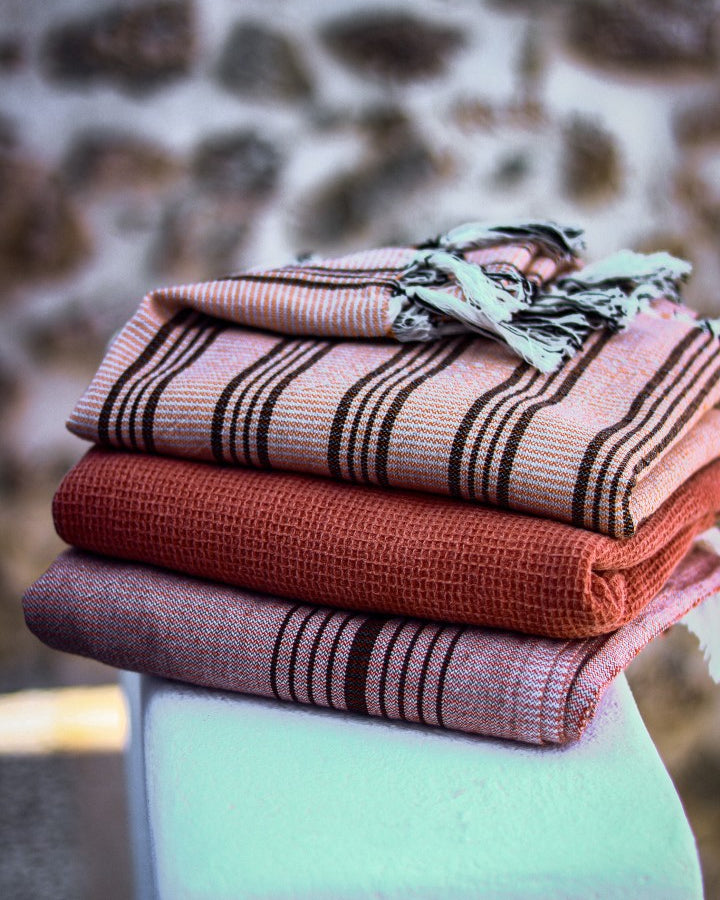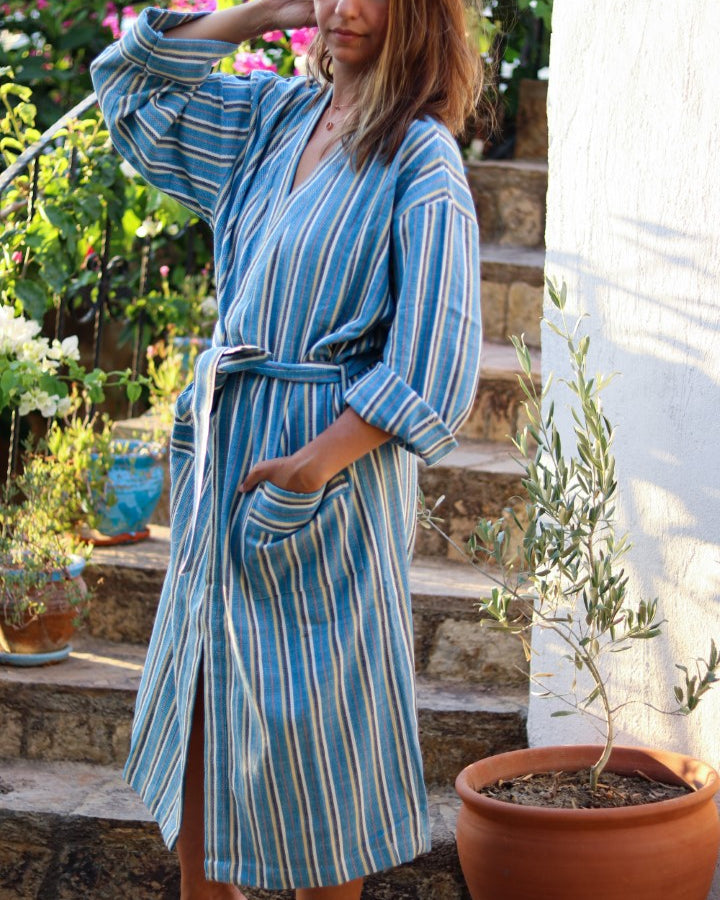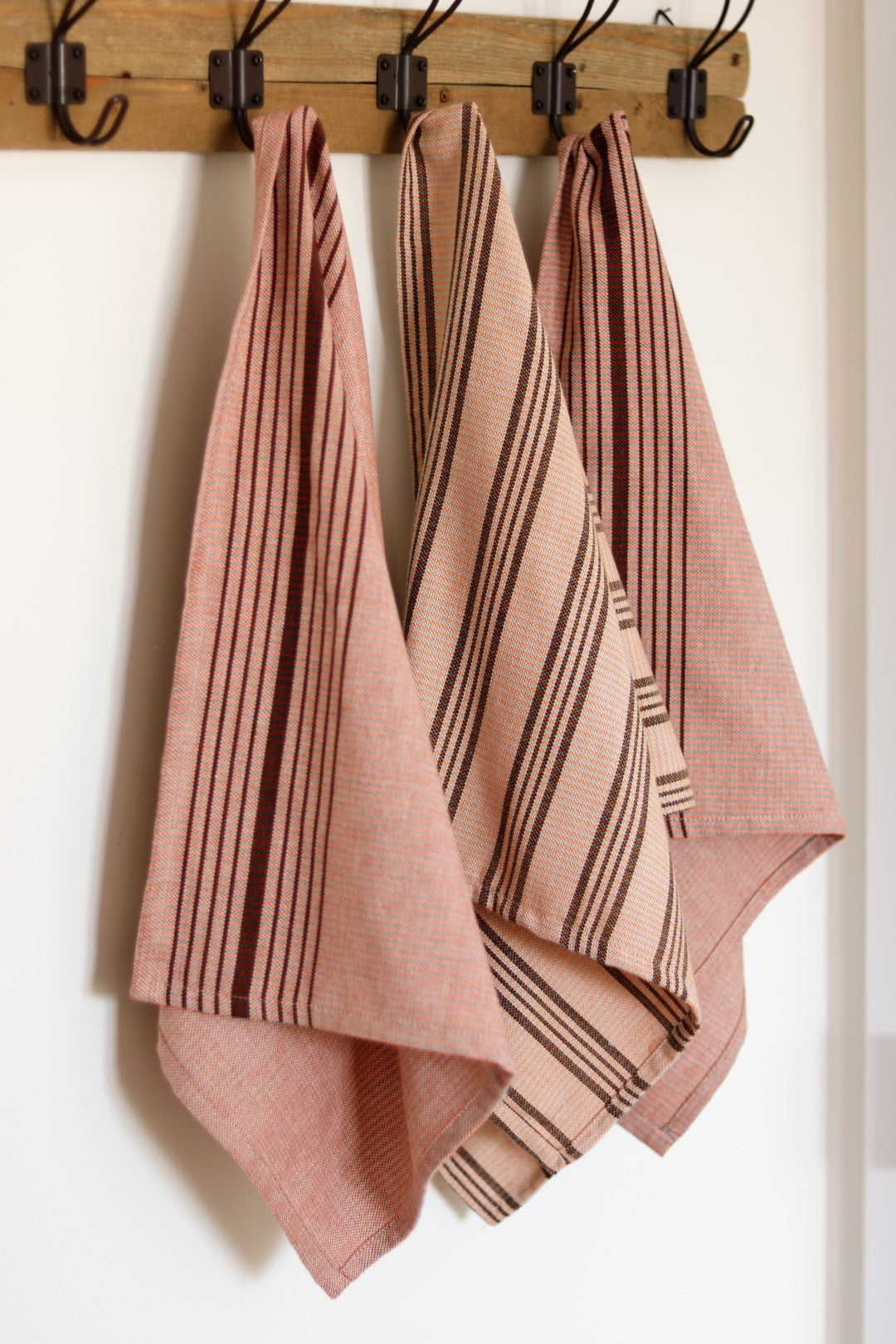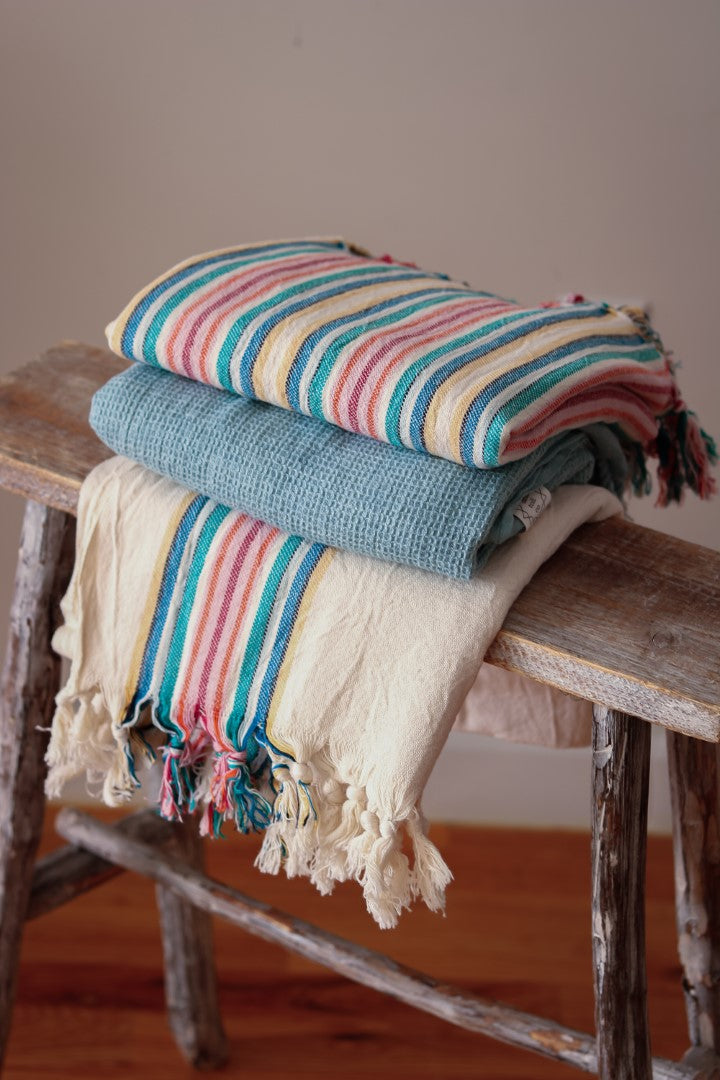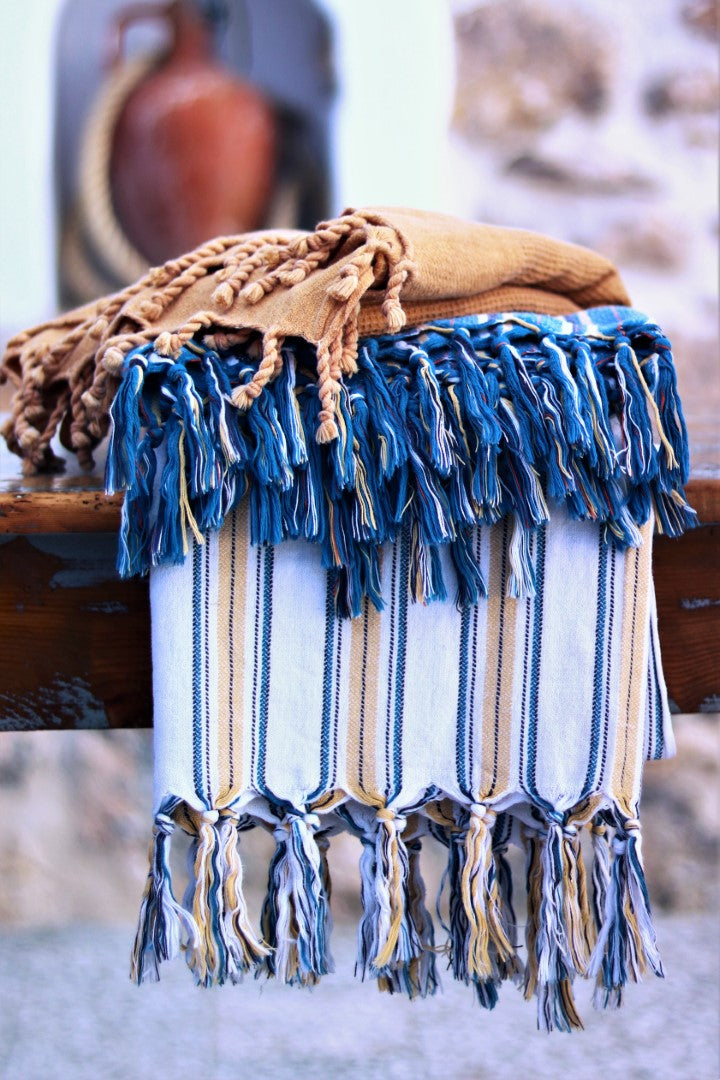Oya's history and spread
Anatolia’s thousand and one species of plants and gaily colored flowers are reborn in the imagination and inner eye of its women. The history of the decorative edging known in Europe as "Turkish lace" is thought to date back as far as the 8th century B.C. to the Phrygians of Anatolia. Some sources indicate that needlework spread from 12th century Anatolia to Greece and from there via Italy to Europe. Traditionally, the headdresses and scarves women wore on their heads, the printed cloths, and prayer and funeral head coverings were decorated with various kinds of Oya, which was also used on undergarments, to adorn outer garments, around the edges of towels and napkins and as a decorative element in many other places. In the Aegean region, even men’s headdresses were decked with layers of Oya.
Oya edging, which appears all over Anatolia in various forms and motifs, has different names depending on the means employed: needle, crochet hook, shuttle, hairpin, bead, tassel to name just a few. Sewing needle Oya is a variety that was produced by affluent, aristocratic, urban women. The most beautiful examples of such Oya, which was usually made with a sewing needle using silk thread, were produced in the Ottoman Palace.
Oya making techniques
Crochet work can be done in different ways in the colors of one’s choosing by using a single crochet hook. It differs from sewing needle Oya in that it employs thicker thread and is less delicate in appearance. Shuttle Oya is produced more by women in the villages and provincial towns, using a small shuttle made of bone. Either one or two colors are used. "Firkete" or hairpin Oya is made by threading beads, sequins, coral or pearls onto thread of a single color. "Çaput" meanwhile, which is more common in the villages where very beautiful and creative examples are produced with limited means, is done by cutting and folding colorful pieces of coarse cloth into squares and using a crochet hook. Crochet hooks are also used for adding tassels. Beaded edging, which is frequently encountered in Anatolia, is done by threading beads of various colors onto the ends of Oya made either with a sewing needle or a crochet hook. Finally, silk thread and cocoon fragments are the materials of "Koza" or cocoon lace Oya, whose primary motifs are created by the cocoons and later added on to Oya produced with either a sewing needle or a crochet hook.


